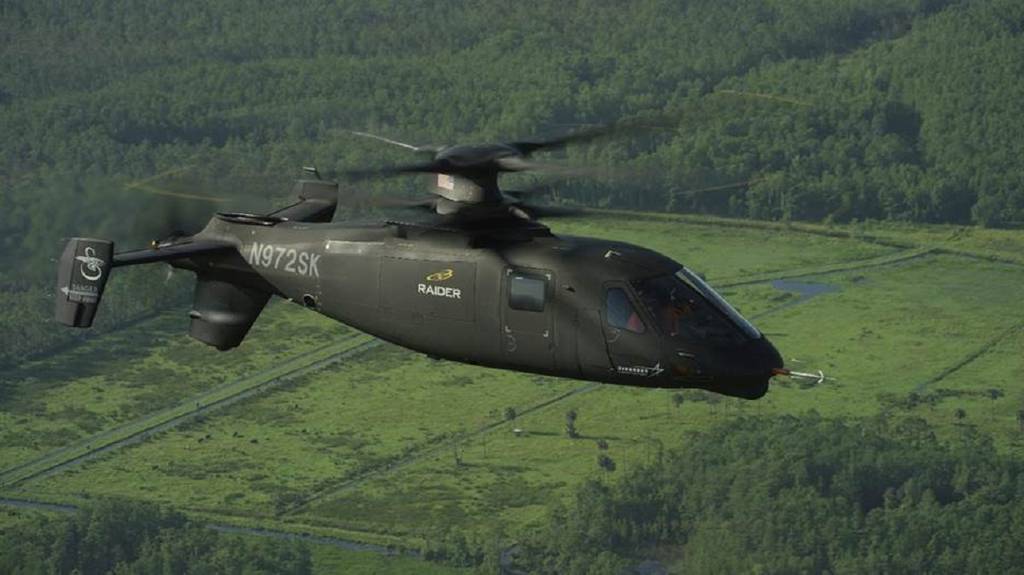ROME — Italy needs to partner with the United States on the development of coaxial rotor helicopters — and fast — to get the same benefits it earned as an early partner on the F-35 program, according to Italy’s Air Force chief.
Gen. Luca Goretti said Italy urgently needs to get in on the ground floor of the technology’s development to avoid playing catch-up later.
“The Americans have asked Italian industry to participate, and I hope that, just as we did with the F-35, we join at the start,” he told Defense News.
Coaxial rotor helicopters, which feature two rotors turning in opposite directions, are under development by a Sikorsky-Boeing team to compete in the U.S. Army’s Future Vertical Lift program. Two platforms, the Defiant X and Raider X, feature pusher propellers that notably increase speed.
After entering the F-35 jet program early with plans to order 130 aircraft, Italy has now built Europe’s only assembly and maintenance facility for the advanced fighter at Cameri Air Base in northern Italy.
“We will be a promoter in Europe of [coaxial] technology, a leader in its development and industrial growth, which will increase in time, as happened with the F-35, where the Germans and Swiss are now looking at us and our maintenance hub in Cameri with a potential interest in our competencies,” Goretti said.
Looking at the future of helicopters, he added: “We have platforms which fly at 140-150 knots. We are looking ahead to better technology, just as we did for the F-35 where we invested in the belief the platform would be adopted in Europe. We were the first to believe in it without losing interest in European programs like the Eurofighter, which is our backbone.”
“The same philosophy can be used for a new-generation helicopter. We often look at where the U.S. is going. Because inevitably that technology will sooner or later be adopted around the world.”
Moreover, the Italian Air Force needs the kind of performance promised by Lockheed Martin and Boeing, he said. Sikorsky is a subsidiary of Lockheed.
“Today they are working on the possibility to fly at 300 knots, to carry out extreme maneuvers and stop immediately, which could be a leap in quality for new generations of helicopters,” Goretti said. “I need that kind of capability: high speed, long range and high maneuverability. Ukraine is the proof. Helicopters have suffered losses because they cannot defend themselves from [surface-to-air missiles], which appear from the woods.”
Italian forces would use the new helicopter to support special forces as well as fulfill search and rescue missions. “The AW139 we now use for search and rescue has limitations in the role, and we bought it off the shelf to fill a gap, waiting to see what technology emerged,” Goretti added.
Talks are underway between Lockheed Martin and Leonardo to hand the latter a role in developing coaxial technology, and Goretti urged the Italian firm to get onboard.
“Leonardo has proved itself a world-beating helicopter firm,” he said. “In the commercial field, they will stay a leader. In the military field, they need to decide if they want to make this leap in quality.”
According to the air chief, Leonardo should not decide that its ongoing development of a new AW249 attack helicopter precludes involvement in coaxial helicopter development. “The AW249 has a two-man crew, and its role is related to ground troops. The FVL [future vertical lift platform] must carry personnel for special forces missions and special forces support. There is no overlap.”
As part of the FVL program in the United States, Bell is also offering the V-280 Valor, a tiltrotor engine, but Goretti said he is less interested in tiltrotor technology.
“If I need to spend a lot on maintenance of the hinges on a tiltrotor, I have a problem with lower availability. Can I afford that? No. The other option looks set to be more efficient,” he said.
Tom Kington is the Italy correspondent for Defense News.








